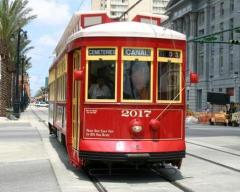Let Voters Decide If Streetcars Are Their Desire
 One of the topics I hear most about is the proposed streetcar project in San Antonio. During a recent telephone town meeting with hundreds of Bexar County constituents, I decided to gauge their views on the subject. (These were random calls to voters of all political stripes.)
One of the topics I hear most about is the proposed streetcar project in San Antonio. During a recent telephone town meeting with hundreds of Bexar County constituents, I decided to gauge their views on the subject. (These were random calls to voters of all political stripes.)
Ninety percent of respondents said they were opposed to the streetcar project. Only 3 percent supported it, and 7 percent were undecided.
This astounding level of opposition to streetcars is not surprising when you look at the proposal's overwhelming costs and the suspect manner in which VIA has pushed the project.
Last September, VIA's board approved a $280 million “starter” route consisting of 6 miles of rail and overhead wires.
With that kind of money, you could gold-plate the rails!
But it's not just the cost that should concern us. The process by which VIA approved this rail project is troubling and suspicious. Despite public concerns, VIA and its supporters refuse to take the project to a vote. Perhaps that's because they realize it might fail as it has in the past.
Voters in 2000 roundly rejected a light rail plan. In 2004, voters backed an Advanced Transportation District, or ATD, in which a special sales tax would help pay for transit improvements — so long as light rail projects were not among these.
While not everyone agrees on the definition of “streetcar” and “light rail,” we can all agree that streetcars run on rail. VIA's own 2035 Long Range Comprehensive Transportation Plan states multiple times that light rail is synonymous with streetcar. That is why many people feel that San Antonio voters have twice rejected streetcars. For those thinking otherwise, why not vote again?
Streetcar advocates correctly point out that a vote on the proposal is not legally required as it does not involve the selling of bonds or a new or expanded tax. But there is no requirement that it not go to a vote. And perhaps it would be good public policy to have citizens vote on controversial projects with a price tag of more than a quarter of a billion dollars, especially when it appears voters' opinions are being ignored.
Apparently, the voters made Bexar County officials nervous.
Some $92 million in streetcar funding was to come from the county's portion of ATD revenue. Amid mounting public awareness that ATD funds are not to be used for light rail, Bexar County redesignated this $92 million for a Loop 1604 project. The Texas Department of Transportation then gave the county $92 million that the state had initially designated for 1604. The county, in turn, directed this $92 million to the streetcar project.
This has all the signs of a shell game.
Access to efficient and reliable public transportation is important for any major city. But streetcars are not a practical way to address the problem of congestion — they'd likely make it worse. Streetcars share the roads with cars, trucks and buses, and many drivers are hesitant to use lanes with streetcar rails. This will add to downtown congestion, not reduce it.
All this for a streetcar that looks more like a bus than a “trolley.”
Many say there are better uses for the hundreds of millions of taxpayer dollars now slated for streetcars. Those funds could be used to add lanes to reduce congestion or to reduce the cost of proposed toll roads on Interstate 10, U.S. 281 or Interstate 35.
As a former Bexar County commissioner, I understand transportation needs. But as a San Antonio resident, I also expect my taxpayer dollars to be spent wisely.
The San Antonio streetcar project is neither popular nor practical. VIA should put the matter to a vote and let the people decide whether this is a streetcar they desire. Or VIA should spend the people's money to reduce congestion and tolls.




Comments
Join the discussion on Facebook
Join the discussion on Facebook.